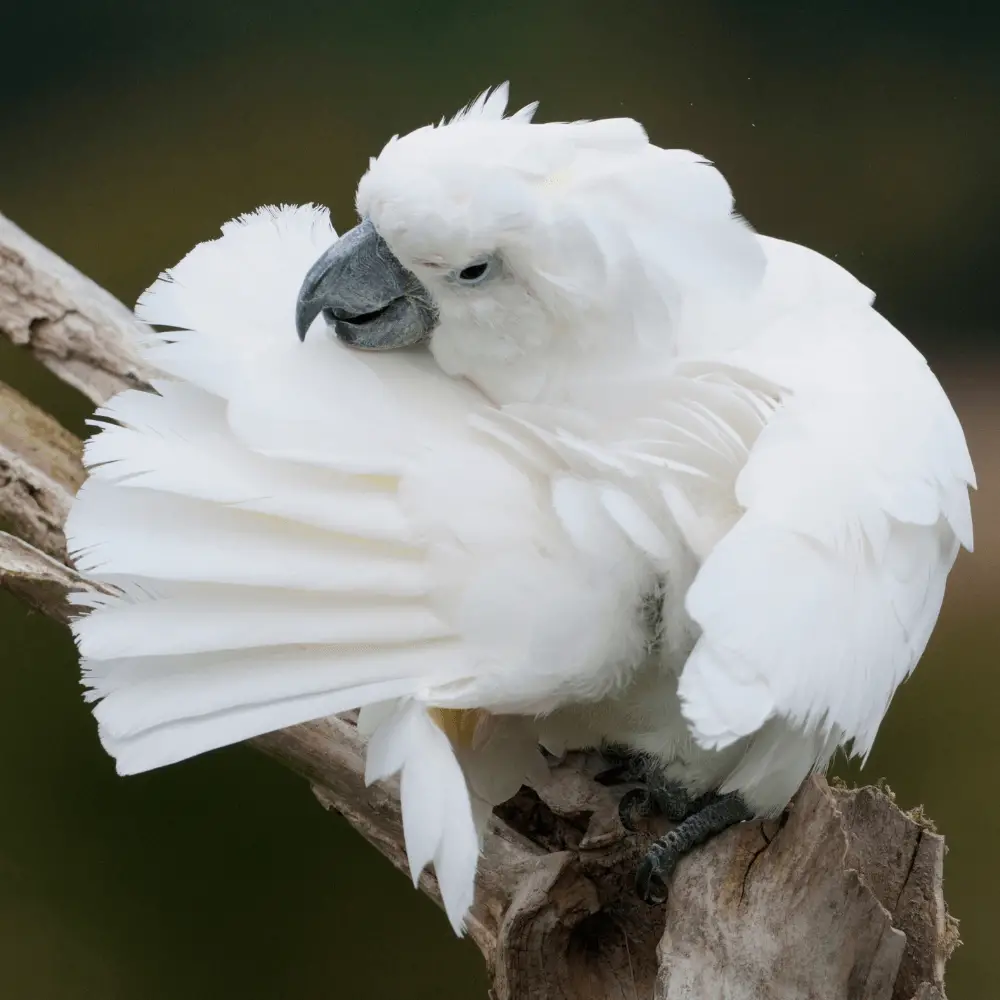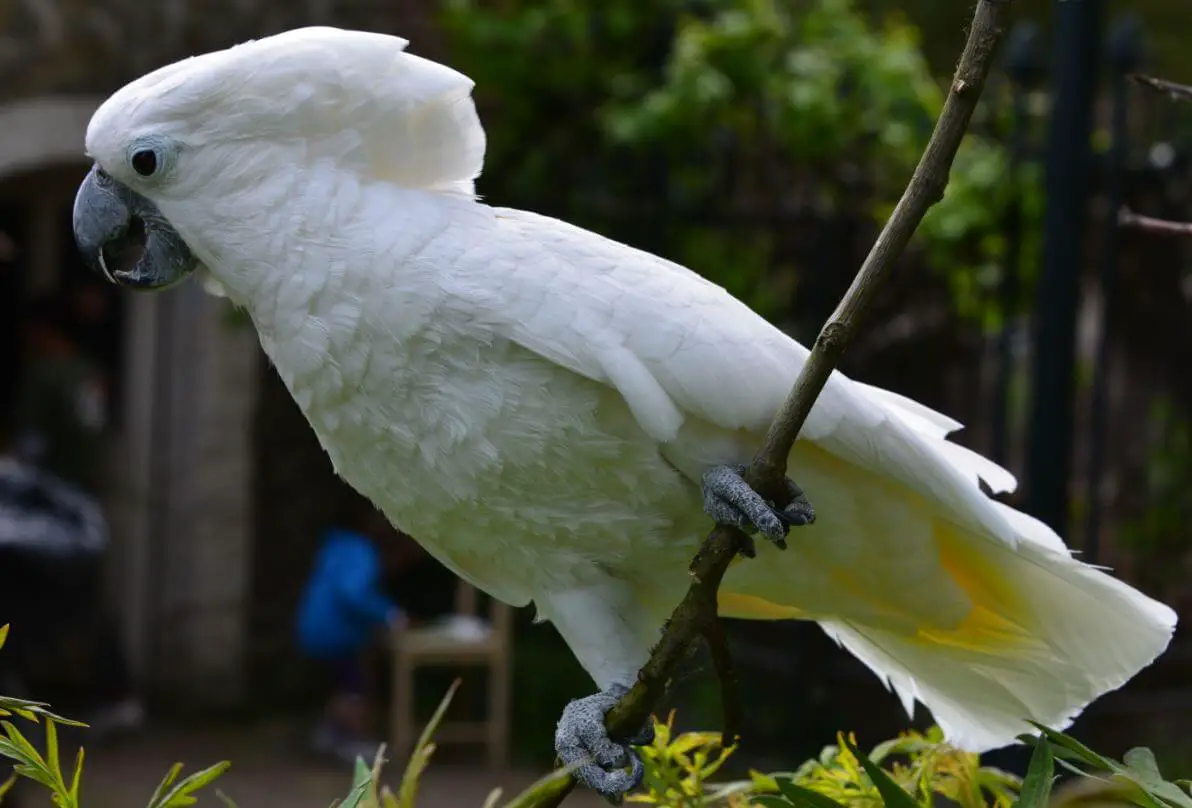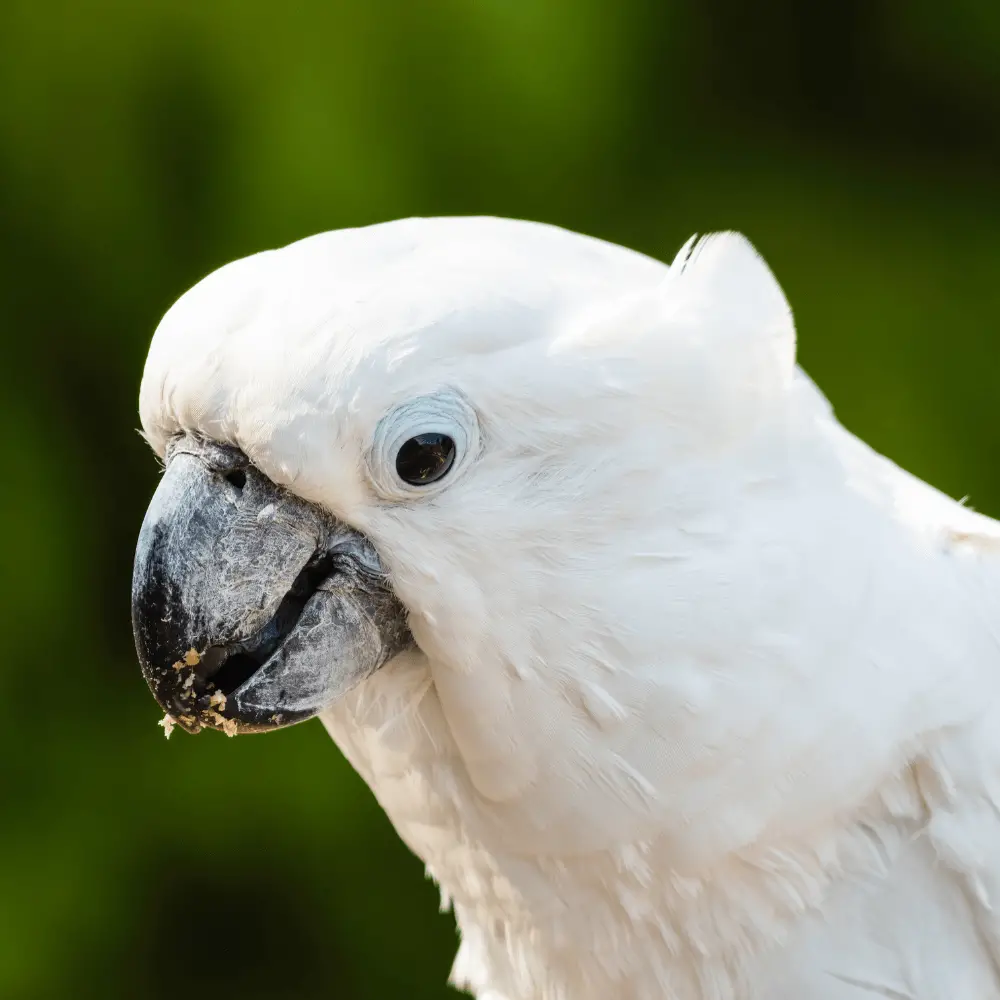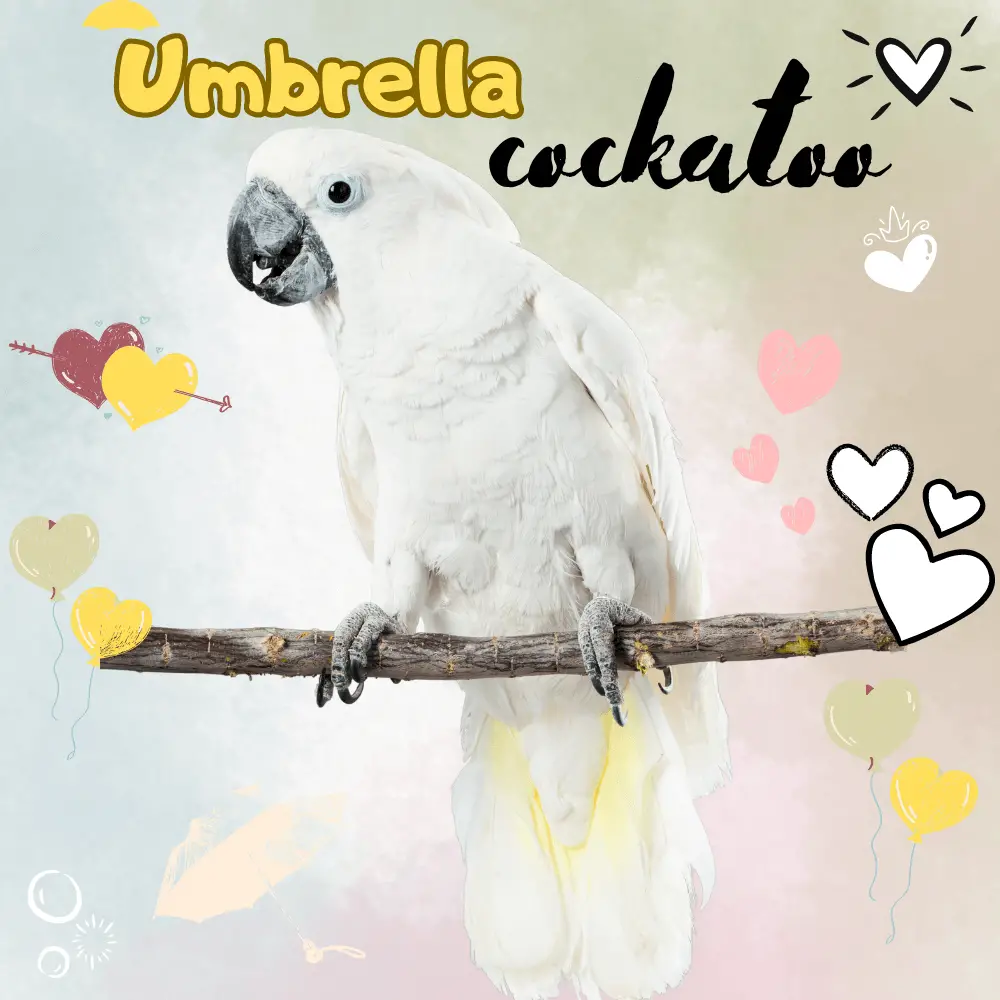The umbrella cockatoo or white cockatoo, white crested cockatoo(Cacatua alba) is a wonderful parrot, and keeping one as a pet means you’ve found the best-feathered friend you could hope for.
They are extra affectionate – verging on obsessive – with their caretakers, although they require more attention and care than many other species.
You can teach these birds to do tricks and to mimic speech, making them an entertaining and enjoyable companion for young and old bird lovers alike.
No wonder these large white parrots are so popular. Their comedic charm will steal your heart and they will never let you forget that they are around them.
Umbrella cockatoo colors
The umbrella cockatoo is primarily white. The underside of their wing and tail feathers is a pale yellow which makes a beautiful sight in flight.
The most prominent of this bird is the pure white crest. When a mate is overwhelmed, irritated, excited, scared, or even frustrated, the crest will rise into a large umbrella-like fan.
It can also be a whimsical way of expressing curiosity about something new and, more often than not, it is a warning that the bird wants to be left alone.
It’s a good sign that the bird might bite if it gets too close.
These cockatoos have black beaks and gray or black feet. Some display a tinge of blue light in the rings around their eyes.
Umbrella cockatoo size

The cockatoo is a medium-sized parrot. Upon reaching this maturity, this species will be about 18 to 24 inches long from the beak to the tip of the tail fenders.
Umbrella cockatoo habitat
The Umbrella Cockatoo is native to the tropics of Indonesia. These birds were originally found on the Maluku Islands in the central and northern parts of the archipelago, although they have been introduced to a number of other islands over the years.
These birds are often found in forests, mangroves, swamps, and open forests. They enjoy living along rivers and edges of clearings and farmlands, which provide a bounty of food. In some areas, they are seen as a nuisance to farmers, particularly those who grow corn.
Perhaps more than other cockatoos, they form a very close bond once they find their lifelong mate. They are rarely far from each other, though they will join in small groups with other cockatoos.
When one bird from a pair is lost, it is not uncommon for the survivor to become genuinely depressed.
In the wild, umbrella cockatoos are a vulnerable and protected species, so it is illegal to trap them for the pet trade. Their population is declining for a variety of reasons, including habitat loss, hunting, and horsepower.
Umbrella cockatoo lifespan
This species can live up to 70 or 80 years or more in captivity when properly cared for.
Umbrella cockatoo behavior

The umbrella parrot is gentle, docile, and temperate in nature, which makes it well-suited to be a companion parrot. They are rarely aggressive and will quickly form strong bonds with their caretakers.
These birds are some of the most affectionate you will find, a trait they carry from the wild. They love to cuddle with their person, bird, or even a favorite object. Whatever it is or what it is paired with, umbrellas will cling to it and be very disappointed when the two are separated.
SOURCE: African Grey Parrot Pet
Umbrella cockatoo care

The vast majority of hand-made umbrella cockatoos make sweet, charming, intelligent, and extremely well-behaved pets. And, as with any bird, potential owners should make sure they can meet their umbrella needs before rushing out and getting one.
Umbrella cockatoos are large birds and need a large cage and play area. It is best to go as large as possible because these birds do not enjoy being contained. They may act or become very unhappy in a confined space and this can lead to self-mutilation and infection.
These cockatoos can also be quite loud when they decide to be.
This may happen when they want attention or feel neglected and are able to produce a call that can be heard over very long distances.
Because of this, an awning may not be the best choice for those who live in apartments or condos or anyone with close neighbors.
parrot needs a deep, uninterrupted sleep every night from 10 to 12 hours. It is a very important part of maintaining their health and well-being.
You will also want to bathe the birds regularly to reduce the powdery dust they emit naturally.
umbrella cockatoo parrots are very social and highly intelligent, so their brains need to be stimulated on a daily basis.
A well-groomed parrot owner will have an arsenal of safe bird toys at their disposal and will be able to set aside at least one to two hours a day to socialize with their pet.
Most cockatoos thrive on being handled, loved, and petted, so equally affectionate and devoted owners are a good match for these parrots. It is definitely a pleading bird and requires plenty of time to train, pay attention, and enrich in order to maintain a healthy relationship.
Umbrella cockatoo diet

Like all large parrots, umbrella cockatoos are big eaters. The ideal diet should consist of a wide variety of vegetables including leafy greens and root vegetables. Higher-quality grains such as quinoa and other ancient grains, fresh sprouts, and fresh fruit will do these birds well.
Sometimes, healthy nuts such as almonds, hazelnuts, walnuts, and pecans can be fed. Healthy seeds such as hemp, milk thistle, or flaxseed can also be offered from time to time.
This diet should be supplemented with a polished high quality diet. Fresh water should be available at all times.
Umbrella cockatoo training

Umbrella cockatoos are active birds. Like all parrots, they need plenty of time out of their cage each day to play and exercise.
The strong beak of the parrot should wield an umbrella as well. It is crucial that you provide your bird with several parrot toys to chew on. Rotate toys every once in a while to provide something new to play with and prevent boredom.
Toys provide exercise, stimulation, and enrichment and are an important part of parrot training. You can teach your parrot to play games like catching on the ground with a small ball, for example. These structured playtimes are essential for bonding and allow birds to stretch their muscles.
To encourage and increase activity inside the enclosure, add plenty of ladders and swings. These are great additions to the environment that will allow your parrot to move around and burn off energy in a positive way.
Related article:

